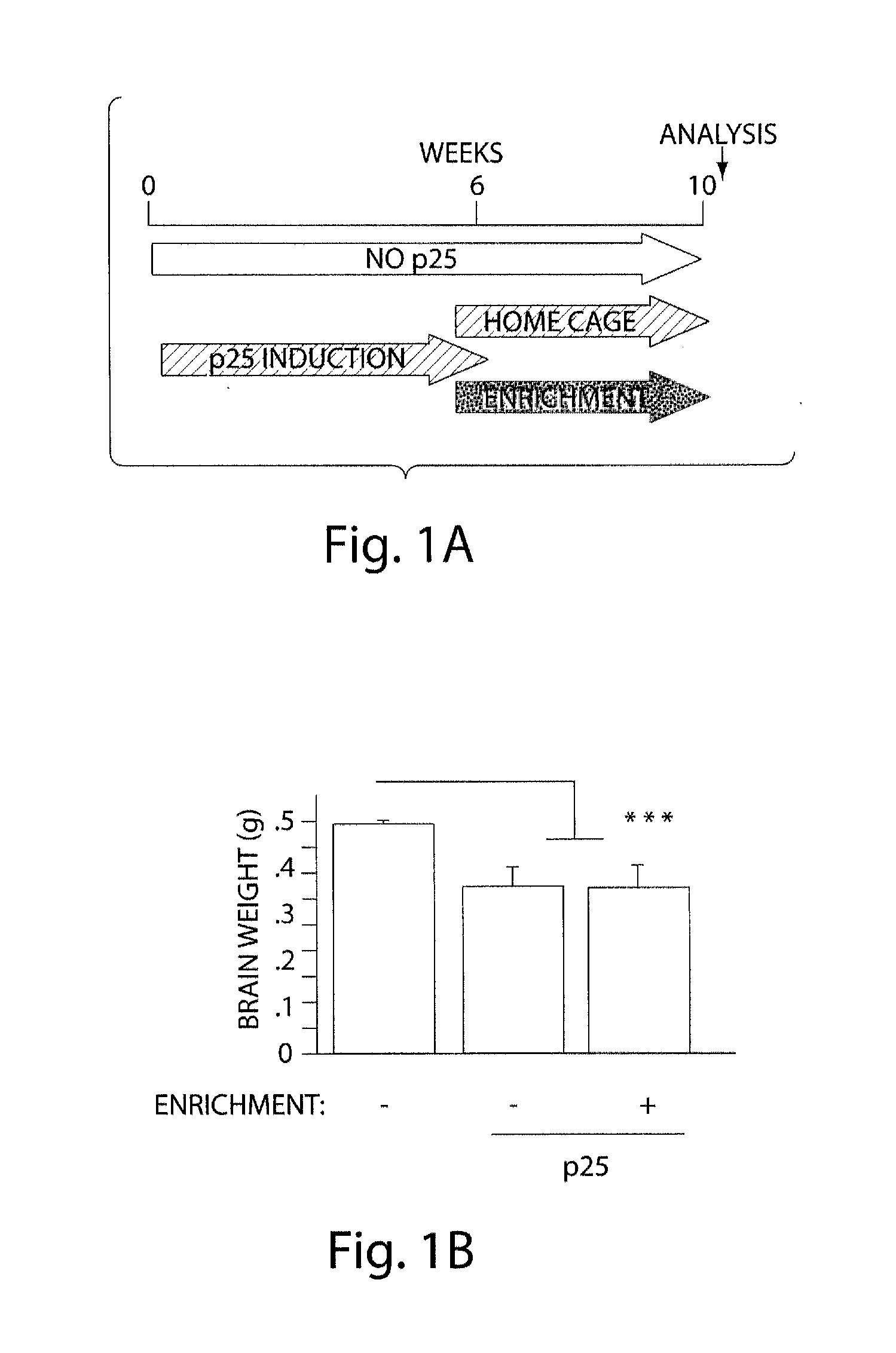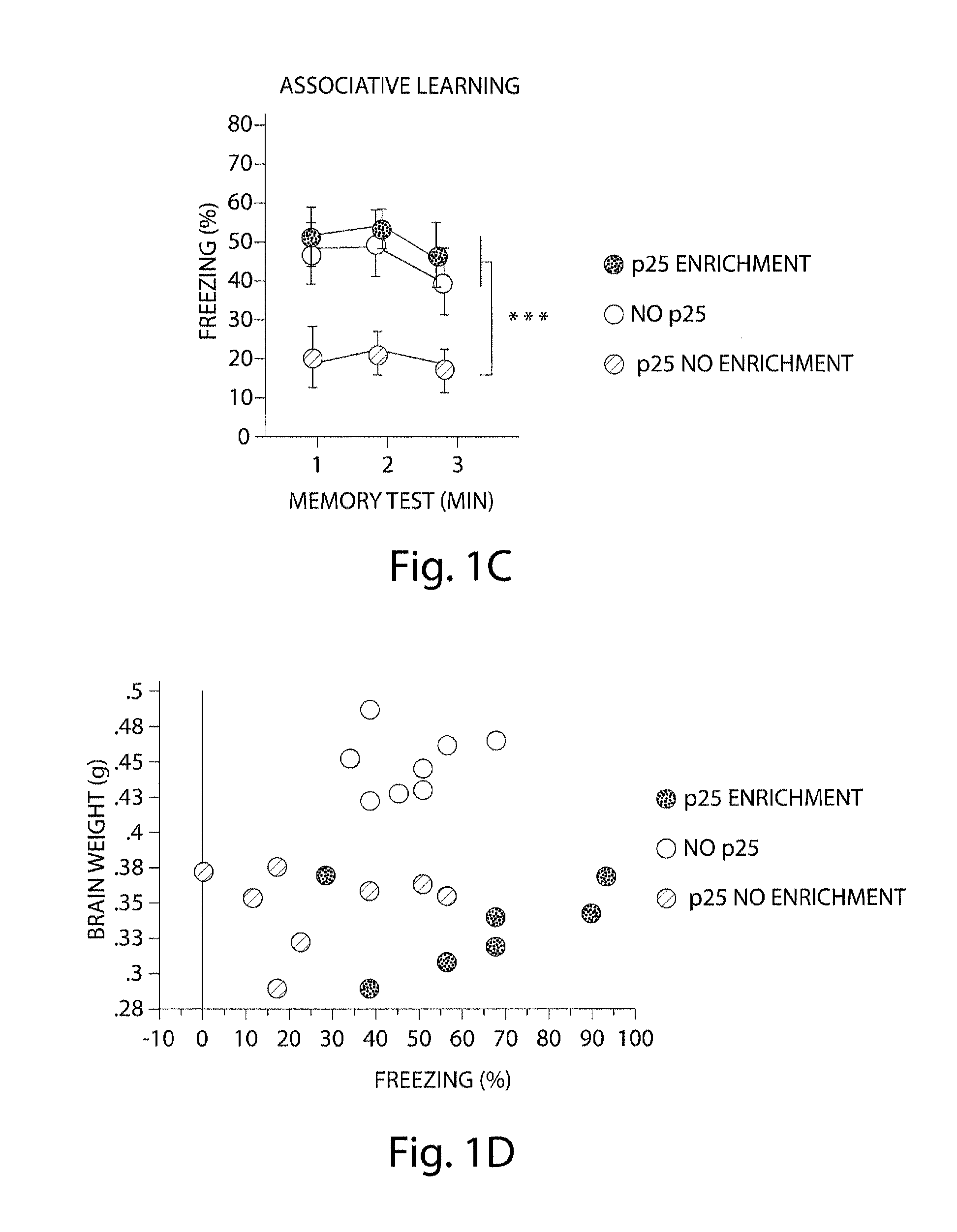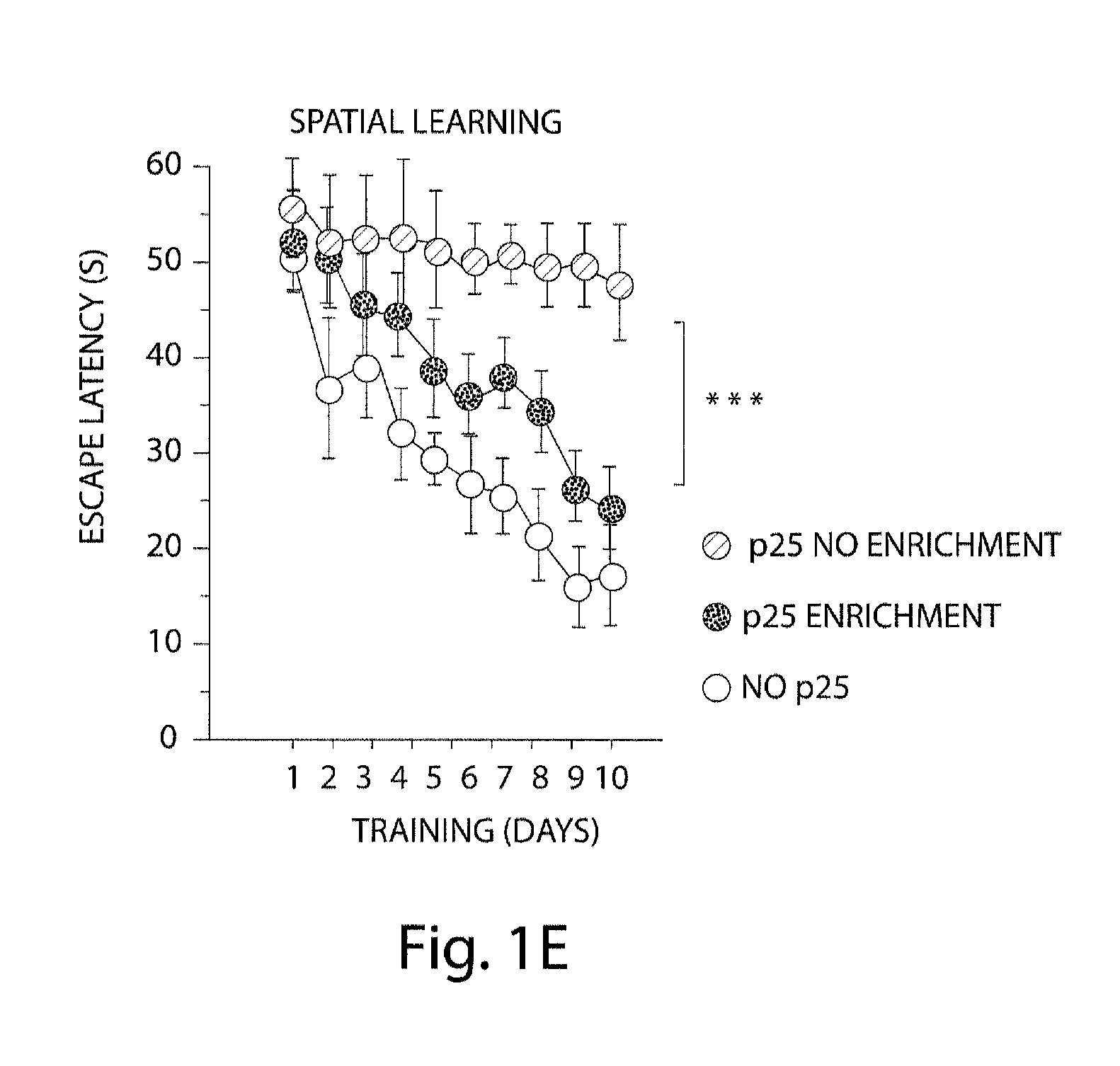Epigenetic mechanisms re-establish access to long-term memory after neuronal loss
a long-term memory and epigenetic technology, applied in the field of epigenetic mechanisms reestablish access to long-term memory after neuronal loss, to achieve the effect of increasing histone acetylation
- Summary
- Abstract
- Description
- Claims
- Application Information
AI Technical Summary
Benefits of technology
Problems solved by technology
Method used
Image
Examples
example 1
The Effect of EE on Learning Behavior after Neuronal Loss
[0143]To investigate the effect of EE on learning behavior after neuronal loss had already occurred, p25 was induced in 11-month old CK-p25 Tg mice for 6 weeks. Afterwards p25 expression was repressed (3) and one group of CK-p25 Tg mice was subjected to EE, whereas the other group was not enriched. Subsequently all mice, including a control group that did not express p25, were subjected to fear conditioning and water maze learning (n=8 / group) (FIG. 1a). Despite a comparable extent of brain atrophy (P=0.2435 enriched vs. nonenriched CK-p25 Tg mice; Pb, FIG. 7a). Non-enriched CK-p25 Tg mice displayed impaired freezing behavior, when compared to control mice (P=0.0337), indicating impaired associative learning. Enriched CK-p25 Tg mice showed significantly more freezing when compared to the non-enriched group (Pc). In addition, the escape latency in the water maze test was significantly impaired in non-enriched CK-p25 Tg mice when...
example 2
Experimental Model for the Investigation of Long-Term Memories
[0146]To establish an experimental model that allows investigation of the fate of long-term memories, 11-month old CK-p25 Tg and control mice were trained in the fear conditioning paradigm and returned to their home cages for 4 weeks to allow the consolidation of hippocampus-independent long-term memories. Subsequently p25 was induced for either 3 (Exp. 1) or 6 weeks (Exp. 2) before the mice were subjected to the memory test. These time points were chosen because, in contrast to 6-week induction, after 3 weeks of p25 expression no overt pathology was observed (3) (FIG. 2a). In Exp. 1, CK-p25 Tg mice (n=8) showed similar freezing than control mice (n=9; P=0.863) (FIG. 2b; Exp.1). In contrast, CK-p25 Tg mice induced for 6 weeks (n=9) showed significant reduction in freezing behavior during the memory test performed 10 weeks after the training when compared to the control group (n=16; Pb; Exp.2). The loss of consolidated lon...
example 3
Mechanism Underlying EE
[0150]Other than a few genes involved in synaptic function, relatively little is known about the mechanism underlying EE (12-14). Since histone acetylation, an epigenetic mechanism regulating gene expression via chromatin remodeling, has recently been implicated in synaptic plasticity and learning behavior (15-18), the induction of a transcriptional program by EE that leads to activation of plasticity genes was evaluated. Wild type mice were subjected to EE and hippocampal and cortical brain lysates were obtained 3, 24 h or 2 weeks later (n=3 / group) by acid extraction and probed with antibodies detecting histone-tail modification that indicate active chromatin. Increases in hippocampal H3 (K-9, K14) and H4 (K-5) and in cortical H3 (K-9) and H4 (K-5) acetylation were observed. In addition increased methylation of H3 (K4) was observed in cortical lysates. No changes in H4 acetylation were observed when the Ac-H4 (K5,8,12,16) antibody was used, which is likely du...
PUM
 Login to View More
Login to View More Abstract
Description
Claims
Application Information
 Login to View More
Login to View More - R&D
- Intellectual Property
- Life Sciences
- Materials
- Tech Scout
- Unparalleled Data Quality
- Higher Quality Content
- 60% Fewer Hallucinations
Browse by: Latest US Patents, China's latest patents, Technical Efficacy Thesaurus, Application Domain, Technology Topic, Popular Technical Reports.
© 2025 PatSnap. All rights reserved.Legal|Privacy policy|Modern Slavery Act Transparency Statement|Sitemap|About US| Contact US: help@patsnap.com



